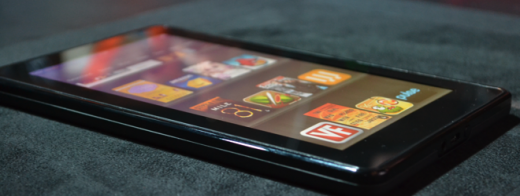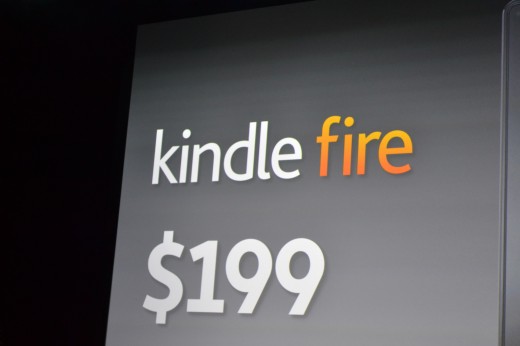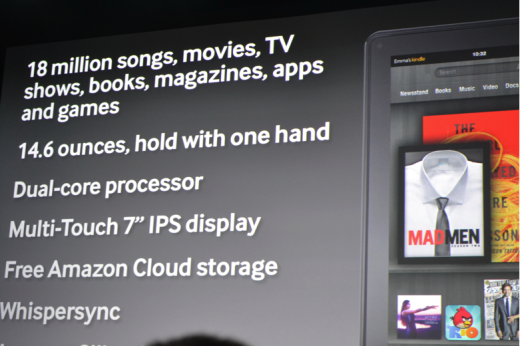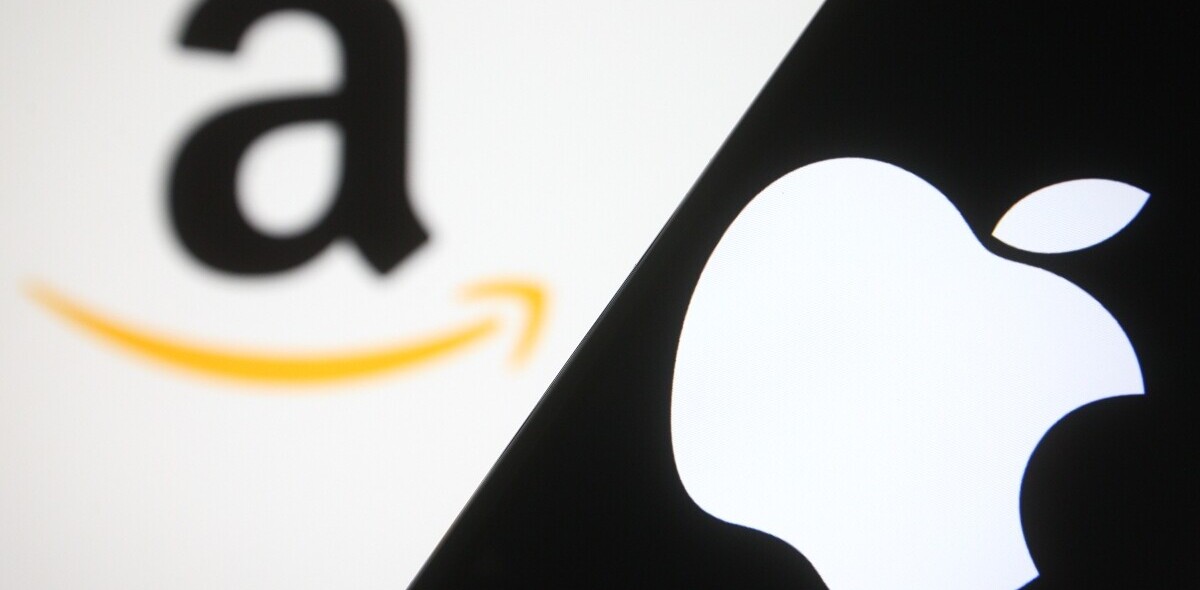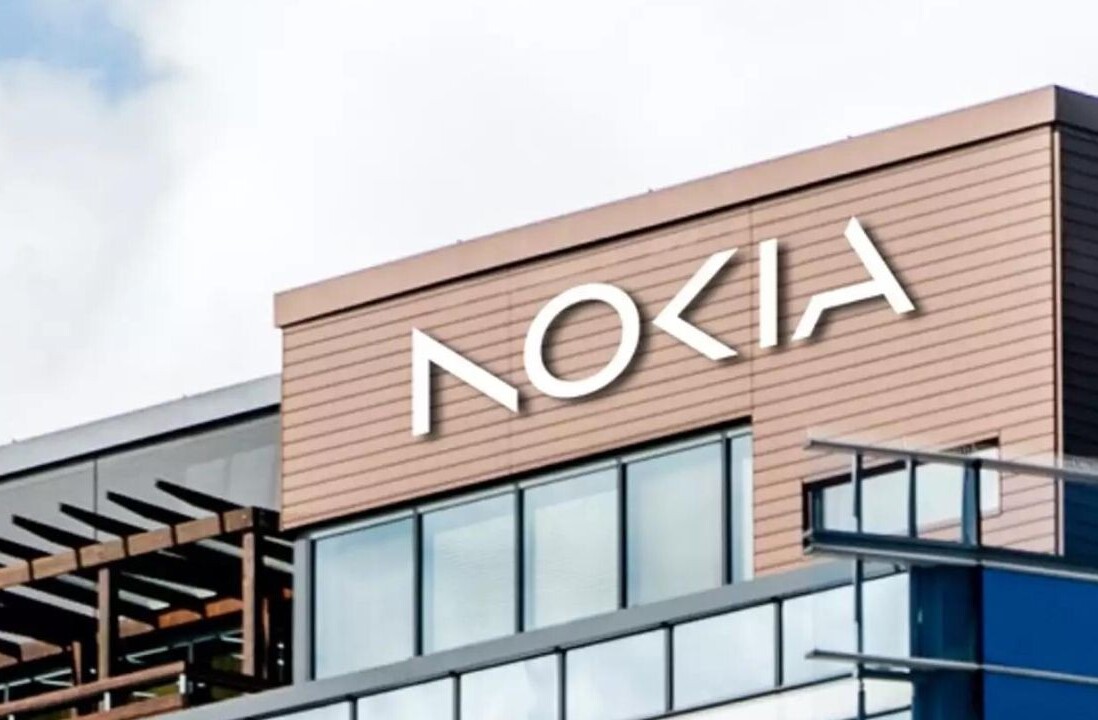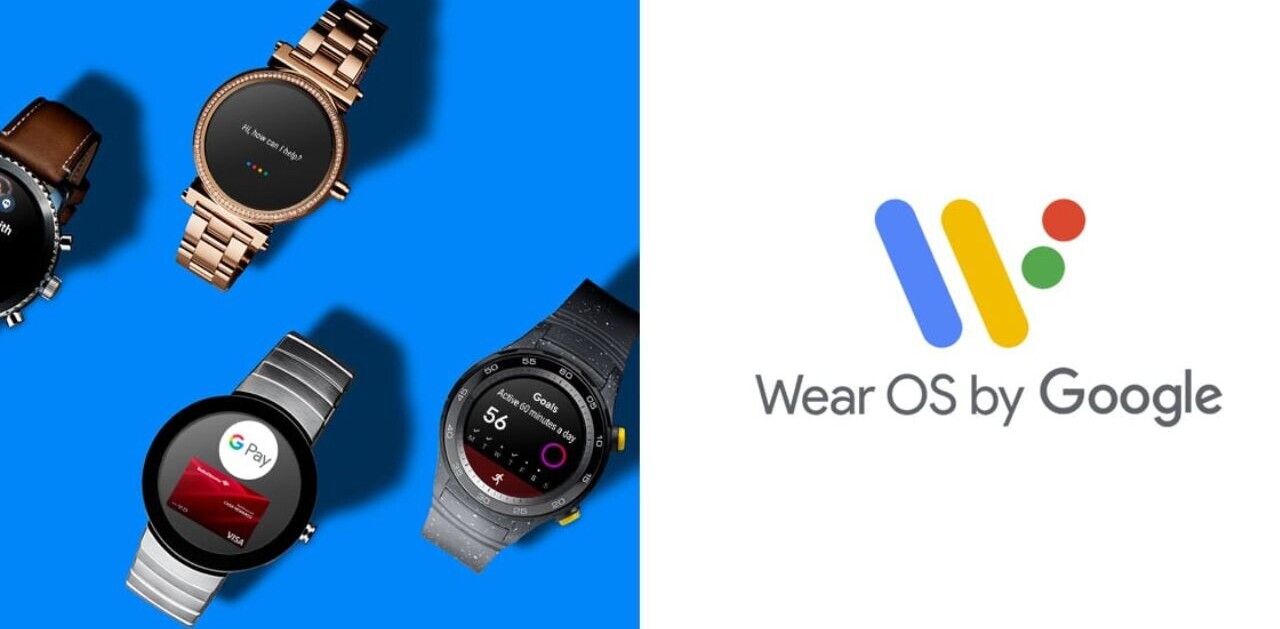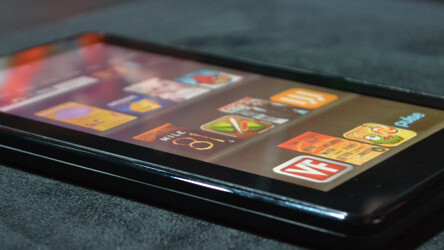
Amazon launched its Kindle Fire tablet at an event in New York City this morning. The tablet has most of the features that have been expected of it. It’s a 7″ bare-bones tablet running on a fork of Android that serves as a portal for people to consume Amazon’s content.
Almost immediately we have seen post after post on tech sites that are shouting ‘iPad-killer!’ because those are the headlines that drive clicks. At least, I’m hoping that’s why they are there and people don’t seriously consider that position to be accurate. The Kindle Fire does absolutely compete with the iPad on some levels, you can’t deny it, but it is also not a direct competitor.
The Kindle Fire is a targeted missile with a laser-like focus on providing consumers with an affordable and attractive tablet that will allow users access to Amazon’s web services and media offerings. During the presentation this morning, Amazon CEO Jeff Bezos spent a lot of time talking about media; how media would be delivered to the Fire, and how it would be synchronized. He spent very little time talking about apps.
This focus on the core experience of the tablet and not on applications is telling. Amazon is telling the people interested in purchasing the Fire that the most important apps are already built-in, the ones that allow them access to Amazon content like books, movies and magazines.
The fact that the Kindle Fire will come pre-loaded with the user’s own content and Amazon account info is a master stroke of a sales tactic, as it was with the original Kindle. But it’s also an indicator to new Fire owners: here is your content, now buy more.
This fits in with the fact that, although I call it a tablet here, Amazon was careful to refer to the Fire as ‘a Kindle’. In this way, it is able to position it as an attractive purchase for those in the market for a Kindle, not just a ‘tablet’. This is similar to the way that people recognize the iPad as its own market and not really part of the tablet market as a whole.
Amazon has already defined a ‘Kindle market’ and the Fire will sell well there regardless.
Android who?
Amazon’s extensive efforts to position the Kindle Fire as a media consumption device were almost completely unbroken by any other message during the presentation. At the end Bezos quickly demonstrated Fruit Ninja as a sort of nod to the fact that, yes, you will be able to use Android apps on this thing. But, once again, it was a game, not any sort of productivity app like the bundled email client.
This did a lot to disguise the fact that the Fire runs on an Android 2.x fork that is built from the open-sourced segments of Google’s OS. Bezos even said that “it’s hard to believe that there is even Android under there,” when talking about its appearance.
In fact, the Kindle Fire runs on something but you can’t actually call it Android, because that is technically a Google trademark on the version of its OS that contains Google apps and branding. So this OS is based on the portions of Android that are available as open source, but then has been tweaked significantly from there.
This means that any improvements that Amazon makes on top of that, including proprietary apps, won’t benefit Android at all. In fact, they basically just swooped all of the development that Google put into it and are effectively giving them back nothing. Not the cachet of having the OS run on Amazon’s tablet, not a kickback for licensing and not the all-important information and advertising that Google harvests from every official Android device.
Competition
This is compounded by the pricing of the Kindle Fire. At $199, with a stripped-down list of features, it is not competing with the iPad on its own turf. Instead, it will carve off a slice of the potential iPad market that is only interested in a great tablet for looking at things. I believe that this section of the iPad’s current market — or potential future market — is most likely fairly small. Once again, if people want an iPad, they buy an iPad.
So where will the most likely sizable market for the Kindle Fire come from? From the portion that would have otherwise purchased whatever less expensive alternative there was, namely Android tablets.
Android tablets from Samsung, Motorola and RIM have had little to no success against the iPad so far and that doesn’t look to change soon with predictions of the iPad market only growing. Amazon is placing the Fire solidly in the $200 market, undercutting the majority of Android tablets currently on the market.
Regardless of how much better the hardware of, say, the Samsung Galaxy Tab is, it just has not had the ability to gain traction in the market. But if you’re looking for a culprit, don’t blame Samsung, blame Android. The Kindle Fire shows just how far behind Google still is with creating an ecosystem to drive tablet adoption.
Bezos pounded out the web services that Amazon was going to leverage to push the Kindle Fire adoption rate forward: Amazon’s Appstore, MPS, Prime with video on demand, web services and Kindle store. All of these have their nozzles planted firmly into the Kindle Fire, ready to pour out content…for a price.
In the short term this will drive adoption, because people will associate their content with the device itself. If they want to read or watch anything purchased from Amazon, they’ll just pick up the cheap tablet that lets them do that, rather than downloading and side loading and converting that content. That’s a thing of the past.
In the long-term, it will enhance the lockin that Amazon has already nurtured with its one-click shopping and its family of successful Kindle devices. This is the same kind of lockin that Apple benefited from when it launched the iPad with millions of iPhone and iPod touch devices already out there, and 70-80 pieces of content per-device already purchased and waiting to be loaded up.
Apple and Amazon did the footwork when they spent 10+ years building an ecosystem of content delivery and lockin that Google is just beginning to feel the lack of.
Bezos feels that Amazon is the leader in this market, saying that “In terms of market share, Amazon is Coke and there isn’t yet a Pepsi.”
This is exemplified in the fact that Amazon Prime members get unlimited streaming of movies and TV shows, right out of the gate. This is a deal that is unmatchable by Google, or Apple for that matter. It’s simply a fantastic hook for anyone who has a Prime account already to say, ‘well, why don’t I get one of these things?’
iPad
The Kindle Fire and the iPad are simply aiming at different parts of the same market. A tablet is often used in the home, but away from the computer and — to a lesser but still great degree — it is used on the go to consume content. Both the iPad and the Kindle Fire are good for this, but the iPad is placed at the pinnacle of what is possible in terms of price and design. The Kindle Fire is aimed squarely at the middle of the market.
The lack of the audio input, Bluetooth and camera are all very clear signs that the Kindle is not intended to care what you want to make, it wants to show you things. Things that you have purchased through Amazon.
Amazon as a company has a history of knowing its strengths and playing to them. It is unlikely that no thought was given to whether Amazon could craft a tablet that would compete at the top of the market, and there are even rumors that Amazon is prepping a 10″ version for the future. But as far as the Fire goes, Amazon has delivered something that speaks to its strengths as a peddler of content.
The iPad is sold for the value of its hardware and it makes a hefty profit off of that. Amazon raced to the bottom of the market with the Kindle so that it could saturate the market with devices that allowed people to purchase more of its content.
It is two very different approaches to the same market and will be conflated only by those with little understanding of the motives involved.
Apple’s content delivery business is substantial enough that it would be massively successful business for any number of other companies, but to Apple it is a drop on the bucket.
For Amazon, the content is the thing. It is interested in having hardware in the hands of as many people as possible that are ready to devour Amazon’s books, movies and other digital content.
These fundamentally different approaches are demonstrated in the pricing, design and marketing of these two devices. In the end, Android tablets are the ones that will suffer the most, smashed between a low-end and high-end option, each backed by a powerful ecosystem that thrives on creating and keeping customers.
Amazonian
The Kindle Fire is a threat, but not to the iPad. Instead, it’s a threat to all of the Android tablets that will feel overpriced and devoid of content once Kindle’s start arriving at customer’s doorsteps filled with their own content and the iPad packing iOS 5 automatically syncs all of their existing apps and music wirelessly.
By comparison, Android tablets, devoid of even an official music store or movie rental service, will feel like empty, overpriced husks. The Kindle Fire isn’t an iPad killer, nor is it the best tablet you can buy. But it is very Amazonian, and that has proven to be a very good thing.
The iPad will maintain its lead, for many reasons that I have discussed elsewhere. But the Kindle Fire is set to cut a swath through the ranks of the lower-priced, content-poor Android competition.
This article was amended to remove a reference to the PlayBook, which runs QNX, not Android.
Get the TNW newsletter
Get the most important tech news in your inbox each week.

